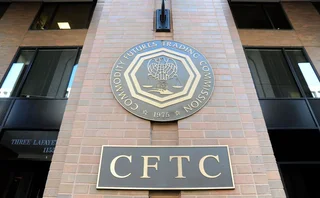
Survey highlights Asia money-laundering risk
Fortent study reveals that Asia faces the highest risk of money laundering, and that trade finance is set for regulatory focus
NEW YORK –Asia has seen the greatest increase in money laundering risk in the world, according to a survey of senior money-laundering compliance officers from national, regional and global financial organisations. The survey, conducted by risk and compliance software provider Fortent, concludes that the retail banking industry represents the area of greatest activity in financial crime and predicts trade finance will be the next focus of regulatory activity.
At international firms, 30% of respondents identified Asia as the region with the greatest growth in money laundering risk. Respondents also anticipated trade finance and ownership will come under regulatory scrutiny over the next five years, again citing Asia – and the Middle East – as the regions of greatest concern.
“China and south-east Asia is an area of tremendous economic expansion and increasing trade to, from, and through the countries in that region,” says Jim Richards, Bank Secrecy Act officer at US firm Wells Fargo. “With the positive benefits of economic expansion and trade come the negative aspects of increased fraud and money laundering. We need to be inventive, determined, and proactive if we’re going to identify and investigate suspicious activity tied to finance in these areas.”
Retail banking was identified by 71% of participants as the sector most sensitive to money-laundering risk. For large financial institutions it represents the side of operations with the greatest percentage of all anti-money laundering compliance risk for an organization. Private banking and electronic cash systems were highlighted as especially dangerous, with debit cards, smart cards, and online value transfer systems all causing concern for the compliance industry.
An increase in criminal activity over the next year was anticipated by 60% of respondents, linking the trend to weakening economic performance. In the wake of the US subprime crisis, the credit crunch is also thought to include an increase in mortgage-related criminal activity. Some 65% said they anticipated their institutions would increase allocation of resources to monitoring and detecting criminal activities, leading to rising costs in systems and staff for firms. Budgetary concerns are also seen as the primary obstacle to effectively waging a war on financial crime – more than half of participants said cost was the reason security had not been stepped up.
Only users who have a paid subscription or are part of a corporate subscription are able to print or copy content.
To access these options, along with all other subscription benefits, please contact info@risk.net or view our subscription options here: http://subscriptions.risk.net/subscribe
You are currently unable to print this content. Please contact info@risk.net to find out more.
You are currently unable to copy this content. Please contact info@risk.net to find out more.
Copyright Infopro Digital Limited. All rights reserved.
As outlined in our terms and conditions, https://www.infopro-digital.com/terms-and-conditions/subscriptions/ (point 2.4), printing is limited to a single copy.
If you would like to purchase additional rights please email info@risk.net
Copyright Infopro Digital Limited. All rights reserved.
You may share this content using our article tools. As outlined in our terms and conditions, https://www.infopro-digital.com/terms-and-conditions/subscriptions/ (clause 2.4), an Authorised User may only make one copy of the materials for their own personal use. You must also comply with the restrictions in clause 2.5.
If you would like to purchase additional rights please email info@risk.net
More on Regulation
US Basel equivalence questioned as EU patience wears thin
MEPs say unfaithful US implementation of Basel III could trigger review of access to EU markets
The Term €STR transition: challenges and market readiness
The progress, challenges and factors shaping the adoption of Term €STR as financial institutions transition from Euribor
CFTC takes red pen to swaps rules, but don’t call it a rollback
Lawyers and ex-regs say agency is fine-tuning and clarifying regulations, not eliminating them
EU edges closer to calming FRTB fund-linked fray
Dealers say temporary solution is a step in the right direction but won’t fully resolve all issues
European Commission changes tune on proposed FRTB multiplier
Banks fear departure from original diversification factor undermines case for permanent relief
Supervisors should be mindful of geopolitical risks, says IMF
Shock events cause sizeable swings in asset pricing, institution’s latest report highlights
Bowman won’t commit to stress-testing the tariff shock
Nominated Fed vice-chair stonewalls calls to run ad hoc scenario similar to 2020 Covid test
Fed’s Bowman to ‘prioritise’ SLR exemption for US Treasuries
Reinstating Covid-era relief is a ‘no brainer’, dealers say, as bond markets reel from tariff chaos







